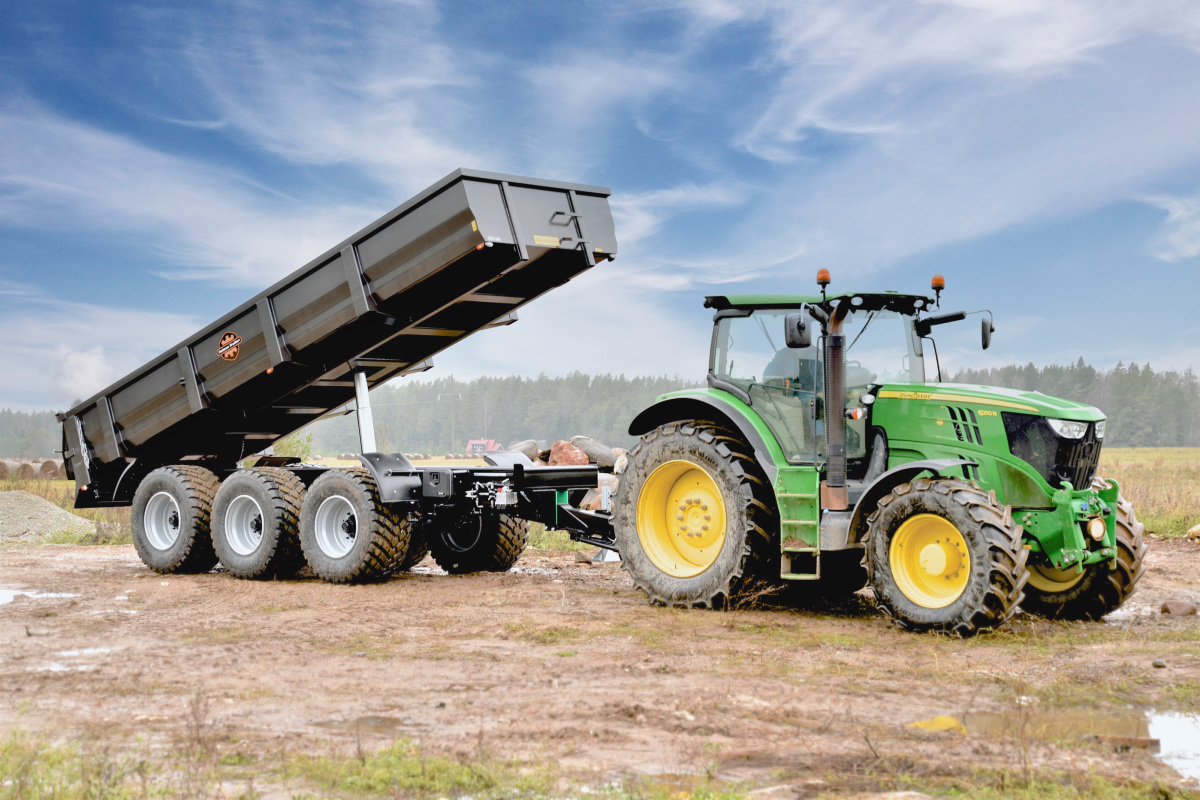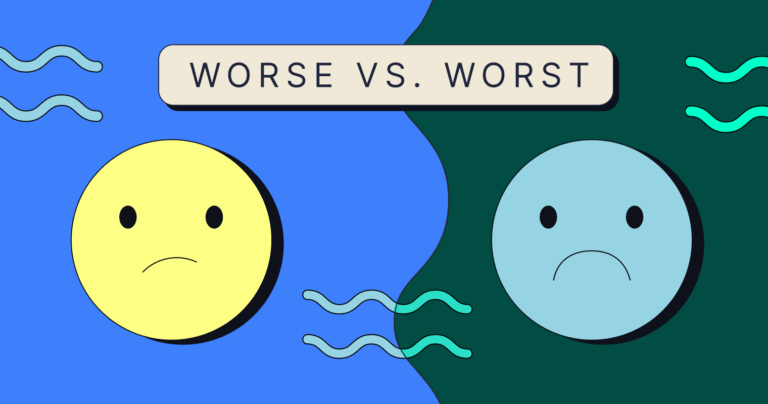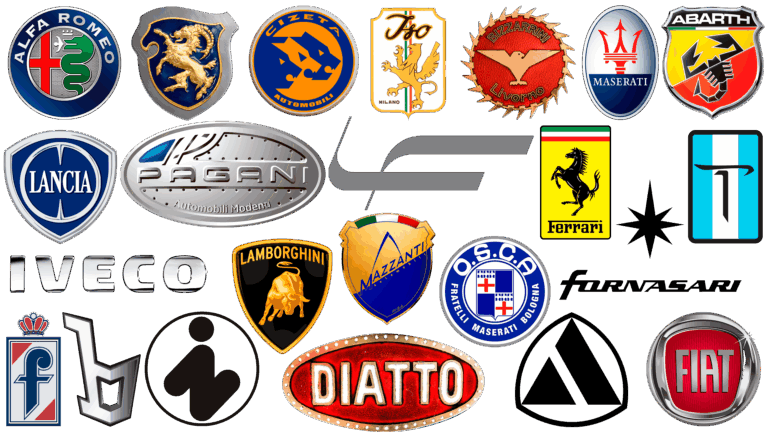Trailer Truck Body Parts Name: A Comprehensive Guide to the Components of a Modern Hauler
Trailer Truck Body Parts Name: A Comprehensive Guide to the Components of a Modern Hauler cars.truckstrend.com
The silent backbone of global commerce, the trailer truck, is an engineering marvel designed for efficiency, durability, and immense load-bearing capacity. While the powerful tractor unit often captures the limelight, it’s the trailer – the cargo-carrying workhorse – that truly facilitates the movement of goods across vast distances. Understanding the specific trailer truck body parts name is not merely an academic exercise; it’s crucial for anyone involved in logistics, transportation, maintenance, or even just those curious about how the modern world moves. Each component, from the robust frame to the smallest light, plays a vital role in ensuring safe, efficient, and compliant operations.
This comprehensive guide will dissect the trailer, exploring its various body parts. We’ll delve into their functions, importance, and how they contribute to the overall integrity and performance of these indispensable vehicles. By the end, you’ll have a thorough understanding of the intricate anatomy of a trailer truck.
Trailer Truck Body Parts Name: A Comprehensive Guide to the Components of a Modern Hauler
I. The Foundation: Chassis and Frame Components
At the core of every trailer lies its chassis, the structural skeleton that provides support and connects all other components. Understanding these foundational elements is key to appreciating a trailer’s strength and stability.
- Main Frame Rails (Longitudinal Beams): These are the primary, heavy-duty steel or aluminum beams that run the length of the trailer, forming its backbone. They are designed to withstand the immense stresses of cargo weight and road forces. Their robust construction is critical for the trailer’s structural integrity.
- Crossmembers: Shorter beams that span horizontally between the main frame rails. They provide lateral support, prevent twisting, and support the floor. Their spacing and strength vary depending on the trailer type and intended load.
- Kingpin (Fifth Wheel Plate): A robust steel pin located at the front underside of the trailer, designed to couple with the fifth wheel on the tractor unit. The kingpin is the crucial link that transfers the trailer’s weight and allows for pivotal movement, enabling turns. Its secure locking mechanism is paramount for safety.
- Landing Gear (Landing Legs/Jacks): Retractable support legs located near the front of the trailer. When the trailer is detached from the tractor, the landing gear is extended to support the trailer’s front end, keeping it level and stable for loading, unloading, or storage. They typically operate via a hand crank, though some are hydraulic.
- Undercarriage (Axles, Suspension, Wheels, Tires, Brakes): While often considered a separate system, the undercarriage is integral to the trailer body. It includes:
- Axles: The shafts connecting the wheels, supporting the trailer’s weight.
- Suspension System: Components (like leaf springs, air bags, or walking beams) that absorb road shocks, providing a smoother ride and protecting cargo.
- Wheels and Tires: The contact points with the road, designed for load capacity and traction.
- Brake System: Air brakes are standard, providing stopping power to the trailer’s wheels, synchronized with the tractor’s brakes.
- Kingpin Lock: A safety device, often a large, robust pin or clamp, used to secure the kingpin when the trailer is uncoupled, preventing unauthorized movement or theft.

II. The Enclosure: Body and Cargo Area Parts
For enclosed trailers like dry vans and reefers, the body components create the protective space for cargo.
- Side Walls (Panels, Ribs, Posts): These form the vertical enclosure of the trailer. They consist of:
- Panels: The outer skin, often made of aluminum, fiberglass reinforced plywood (FRP), or composite materials, providing weather protection and structural rigidity.
- Side Ribs/Posts: Vertical structural members behind the panels that provide support and strength to the walls.
- Roof (Roof Bows, Sheeting): The top covering of the trailer, typically made of aluminum or translucent fiberglass.
- Roof Bows: Arched or straight members that support the roof sheeting and prevent it from sagging.
- Roof Sheeting: The outer layer of the roof, designed to be waterproof and durable.
- Front Wall (Bulkhead): The solid wall at the very front of the trailer, directly behind the kingpin. It protects the cargo from shifting forward during sudden braking and also shields the tractor from potential cargo impact.
- Rear Doors: The access point for loading and unloading cargo. Common types include:
- Swing Doors (Barn Doors): Two hinged doors that open outwards, offering full access to the trailer’s width.
- Roll-up Doors: A single door that retracts upwards into the trailer roof, ideal for tight spaces or dock loading.
- Latch Mechanisms: Robust hardware designed to securely close and lock the rear doors, preventing cargo loss and theft.
- Floor: The internal surface of the trailer on which cargo rests. Materials vary based on application:
- Wood (Hardwood/Laminated): Common for dry vans, offering good friction and durability.
- Aluminum: Lighter and resistant to corrosion, often used in reefers or specialized trailers.
- Composite: Modern materials offering a balance of strength, weight, and durability.
- Rub Rails: Horizontal strips of metal or composite material running along the bottom exterior of the side walls. They protect the trailer body from minor impacts, such as those from forklifts or dock walls.
- Logistics Posts/E-Track Systems: Vertical channels or horizontal tracks installed inside the trailer walls. They provide attachment points for cargo securement devices like straps, bars, and shoring beams, preventing cargo shifting during transit.
- Aerodynamic Devices: Components designed to reduce air resistance and improve fuel efficiency.
- Side Skirts: Panels extending downwards from the trailer’s underside, covering the gap between the wheels and reducing turbulence.
- Boat Tails/Rear Fairings: Devices attached to the rear doors that taper the trailer’s profile, reducing drag.
III. Safety and Lighting Systems
Visibility and safety are paramount in trucking. Dedicated body parts ensure the trailer is seen and operates safely.
- DOT-Compliant Lighting: A network of lights required by Department of Transportation (DOT) regulations to ensure the trailer is visible and communicates its intentions.
- Marker Lights: Small lights (amber on sides, red on rear) indicating the trailer’s width and length.
- Taillights: Red lights at the rear, visible from behind.
- Brake Lights: Brighter red lights that illuminate when brakes are applied.
- Turn Signals: Amber lights (front and rear) indicating turns.
- Reflective Tape (Conspicuity Tape): High-visibility reflective tape applied to the sides and rear of the trailer in specific patterns, making it highly visible at night or in low-light conditions.
- Mud Flaps/Splash Guards: Flexible panels positioned behind the wheels to prevent water, mud, and debris from being sprayed onto other vehicles or the trailer itself.
- Rear Bumper (ICC Bumper/Underride Guard): A strong, rigid steel structure at the very rear of the trailer, designed to prevent passenger vehicles from underriding the trailer in a rear-end collision. It must meet specific height and strength regulations.
- Air Lines and Electrical Connections:
- Gladhands: Couplings that connect the tractor’s air lines (service and emergency) to the trailer’s air brake system.
- Pigtail (Electrical Cable): A coiled electrical cable that connects the tractor’s electrical system to the trailer’s lights, ABS, and other electrical components.
IV. Specialized Trailer Body Parts (Examples)
While the above covers general components, specialized trailers have unique body parts tailored to their function.
- Flatbed Trailer:
- Headboard: A vertical barrier at the front, protecting the tractor cab and securing the front of the load.
- Stake Pockets: Openings along the sides for inserting stakes to create side walls or secure cargo.
- Winches and Straps: Mechanical devices attached to the rub rails for tightening cargo securement straps.
- Reefer Trailer (Refrigerated Van):
- Insulation: Thick, high-performance insulation within the walls, roof, and floor to maintain precise temperatures.
- Refrigeration Unit: A large, externally mounted unit (e.g., Thermo King, Carrier) containing the compressor, condenser, and evaporator, responsible for cooling the trailer.
- Air Chutes: Internal ducts that distribute cold air evenly throughout the cargo area.
- Tanker Trailer:
- Barrel/Tank: The cylindrical or elliptical vessel that holds liquid or dry bulk cargo.
- Manways: Sealed openings on top for inspection, cleaning, or loading.
- Valves and Discharge Hoses: Specialized fittings and hoses for safely loading and unloading the contents.
- Dump Trailer:
- Hoist Cylinder: A powerful hydraulic cylinder that lifts the front of the trailer body to discharge bulk materials.
- Tailgate: The rear door, often hinged at the top, that opens for dumping.
- Tarpaulin System: A retractable cover used to secure and protect loose bulk materials during transit.
- Lowboy Trailer:
- Gooseneck: The detachable front section that connects to the tractor, allowing the main deck to be lowered for loading oversized or heavy equipment.
- Deck: The main, low-slung platform for carrying tall or heavy loads.
- Ramps: Often integrated or detachable, used for loading equipment onto the deck.
V. Practical Advice and Maintenance Tips
Understanding trailer body parts is invaluable for effective maintenance, which directly impacts safety and operational costs.
- Regular Inspections: Implement rigorous pre-trip, en-route, and post-trip inspections. Check for visible damage, loose fasteners, tire pressure, and proper light function. Pay close attention to the kingpin area and landing gear.
- Lubrication: Regularly lubricate moving parts like the kingpin, landing gear screw mechanisms, and door hinges. This prevents wear and ensures smooth operation.
- Tire Pressure Monitoring: Correct tire pressure is critical for safety, fuel efficiency, and tire longevity. Use a reliable gauge and check regularly.
- Brake System Checks: Listen for air leaks, check brake pad wear, and ensure all lights are functioning. The brake system is a primary safety component.
- Body Damage Repair: Promptly address dents, punctures, or tears in side panels, roof, or floor. Even small breaches can lead to cargo damage or structural issues over time.
- Lighting Functionality: Replace burnt-out bulbs or damaged lights immediately. Ensure reflective tape is clean and intact for maximum visibility.
- Importance of Quality Parts: When replacing parts, opt for OEM (Original Equipment Manufacturer) or high-quality aftermarket components. Substandard parts can compromise safety, durability, and compliance.
VI. Challenges and Solutions
Trailers operate in harsh environments, facing constant wear and tear.
- Corrosion: Exposure to weather, road salt, and chemicals can lead to rust, especially on steel components.
- Solution: Regular washing, applying protective coatings (paint, galvanization), and using corrosion-resistant materials (aluminum).
- Impact Damage: Dents, scrapes, and punctures from loading/unloading, tight maneuvers, or road debris are common.
- Solution: Training drivers on proper maneuvering, using rub rails and protective linings, and prompt repair of damage to prevent escalation.
- Wear and Tear: Moving parts like landing gear, door hinges, and suspension components naturally wear out over time.
- Solution: Adhering to manufacturer-recommended maintenance schedules, regular lubrication, and timely replacement of worn parts.
- Compliance: Meeting ever-evolving DOT and local regulations for lights, reflective tape, and bumper height can be challenging.
- Solution: Staying updated on regulations, using certified parts, and conducting regular compliance checks.
Estimated Price Range for Common Trailer Truck Body Parts
Please note that prices are highly variable based on brand, material, quality, supplier, and current market conditions. These are estimated ranges for common replacement parts and should be used as a general guide, not a definitive quote. Installation costs are typically separate.
| Part Name | Description | Estimated Price Range (USD) |
|---|---|---|
| Kingpin | For standard dry van/flatbed trailer (weld-on/bolt-on) | $150 – $400 |
| Landing Gear Set | Pair of complete landing gear assemblies (crank type) | $800 – $2,500 |
| Aluminum Side Panel | Standard size (e.g., 4×8 ft or 4×10 ft), non-insulated | $100 – $350 per panel |
| FRP Side Panel | Fiberglass Reinforced Plywood (e.g., 4×8 ft or 4×10 ft) | $150 – $450 per panel |
| Rear Swing Door | Single door, standard dry van (wood/FRP core) | $500 – $1,200 |
| Roll-Up Door | Complete assembly for dry van | $1,500 – $3,500 |
| LED Tail Light | Standard DOT-compliant LED stop/turn/tail light | $30 – $80 per light |
| LED Marker Light | Standard DOT-compliant LED side marker light | $10 – $30 per light |
| Rear ICC Bumper | Complete assembly, standard steel | $400 – $1,000 |
| Mud Flap (Pair) | Standard rubber or poly mud flaps | $30 – $100 |
| Rub Rail Section | Aluminum or steel (e.g., 8-10 ft section) | $50 – $150 per section |
| Side Skirt Kit | Complete aerodynamic side skirt system for a 53ft trailer | $1,500 – $4,000 |
| Floor Boards | Laminated hardwood (e.g., 12 ft section) | $80 – $200 per section |
| Air Line (Pigtail) | Coiled air hose for service/emergency lines (15 ft) | $50 – $150 |
| Electrical Cable | 7-Way coiled electrical cable (15 ft) | $40 – $100 |
Frequently Asked Questions (FAQ)
Q1: What is the most critical structural part of a trailer’s body?
A1: The Main Frame Rails are arguably the most critical structural components. They form the primary load-bearing backbone of the trailer, supporting all other parts and the cargo itself. Damage to the frame rails can compromise the entire trailer’s integrity.
Q2: How often should trailer body parts be inspected?
A2: Trailer body parts should be visually inspected daily (pre-trip and post-trip inspections). More detailed inspections, including checking for wear, corrosion, and proper function of all components, should be part of a regular preventive maintenance schedule, typically every 3-6 months or per manufacturer recommendations.
Q3: Can I replace trailer body parts myself?
A3: Some minor parts like lights, mud flaps, or reflective tape can be replaced by a competent individual. However, major structural components like kingpins, frame rails, or complex door assemblies require specialized tools, knowledge, and often welding skills, making professional repair advisable for safety and compliance.
Q4: What are side skirts for on a trailer?
A4: Side skirts are aerodynamic devices designed to reduce air turbulence around the trailer’s undercarriage and wheels. By streamlining airflow, they significantly improve fuel efficiency, potentially saving thousands of dollars in fuel costs over the trailer’s lifespan.
Q5: What’s the main difference between a dry van and a reefer trailer’s body?
A5: The primary difference is insulation and refrigeration. A reefer (refrigerated) trailer has heavily insulated walls, roof, and floor, along with a powerful refrigeration unit, to maintain precise temperatures for perishable goods. A dry van is uninsulated and designed for general cargo that doesn’t require temperature control.
Q6: Why is the kingpin so important, and what are gladhands?
A6: The kingpin is crucial because it’s the sole mechanical connection point between the tractor and the trailer, allowing the trailer to be towed and steered. Gladhands are air hose connectors that link the tractor’s air brake system to the trailer’s brakes, ensuring synchronized braking.
Conclusion
The world of trailer truck body parts name is vast and intricately designed, each component serving a critical purpose in the complex ballet of modern logistics. From the robust kingpin that forms the vital connection to the delicate wiring that powers the lights, every part contributes to the trailer’s ability to safely and efficiently transport goods across continents.
A comprehensive understanding of these parts is not just for mechanics; it empowers drivers, fleet managers, and logistics professionals to make informed decisions regarding maintenance, operations, and safety. By prioritizing regular inspections, timely repairs, and the use of quality components, we ensure the longevity of these essential workhorses, minimize downtime, and, most importantly, keep our roads safer for everyone. The humble trailer, with its myriad of precisely engineered parts, truly is the unsung hero of the global supply chain.





